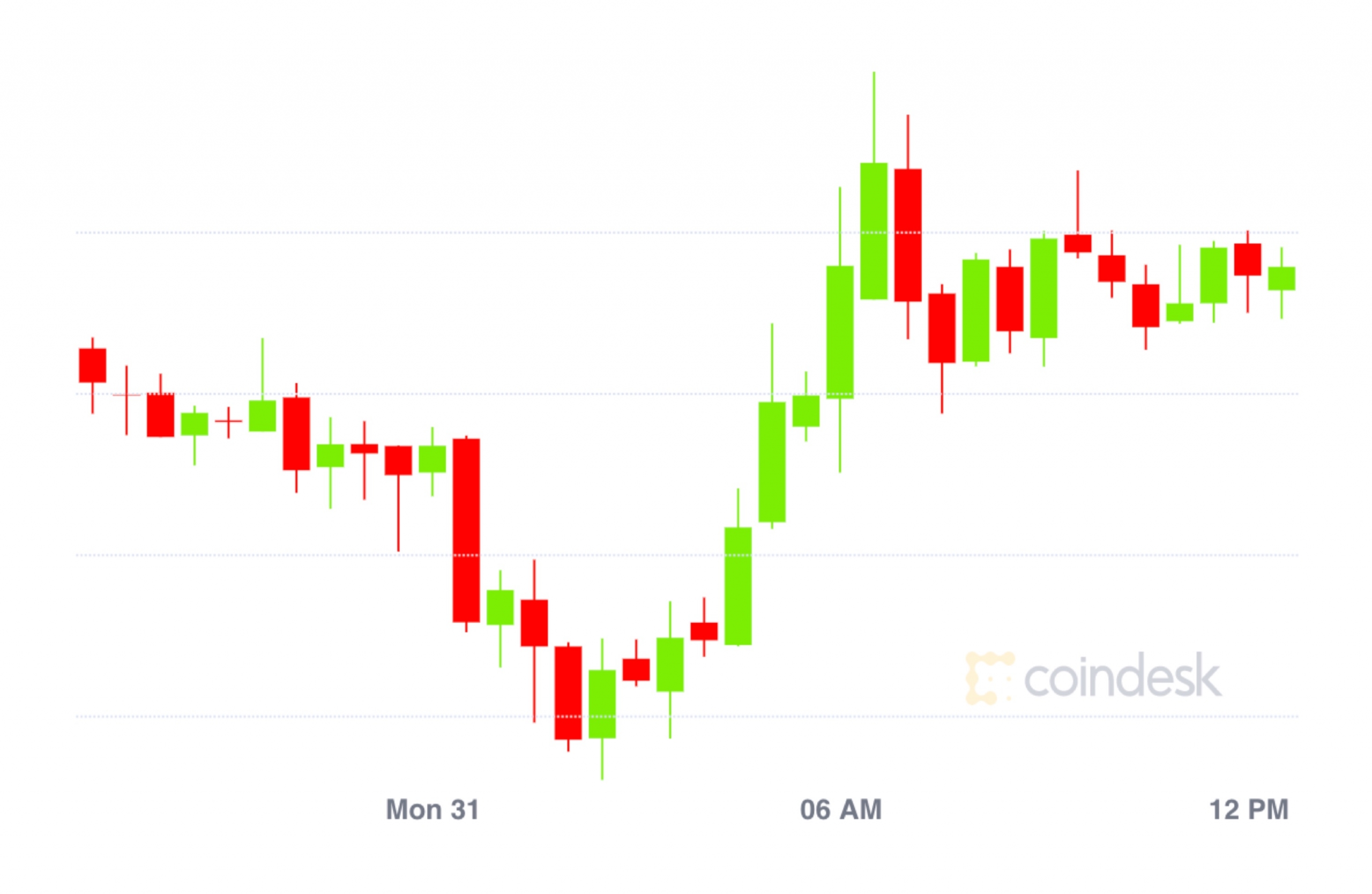Every DePIN Has a Story
In 1987, I sat outside the Medco Center in Springfield, Kentucky, with my grandfather, Bob Burns, a blind ex-industrial laundry worker from Boston. At 80, Bob spent many of his final days at Medco Center, seated in a folding chair and following the sun like a human sundial. One day, he showed me a remarkable watch that, with the press of a button, would speak the current time – a fascinating device for a seven-year-old. This moment marked the beginning of my curiosity of how technology could change everyday life, and the start of my journey in what is now called decentralized physical infrastructure (DePIN).
This op-ed is part of CoinDesk’s new DePIN Vertical, covering the emerging industry of decentralized physical infrastructure.
The charm of a DePIN project is in its origin story. For many of us, DePIN is about scratching that metaphorical itch that comes from the quirks and gaps in business and society. During my tenure at Helium, one of the significant challenges we faced was incentivizing hosts to plug in our hotspots. While it was easy to get friends and family on board, achieving widespread adoption in 2013 seemed nearly impossible. Six years later, Amir Haleem, Marc Nidjam, Andrew Thompson, and the team cracked the code by creating the Helium Blockchain. This moment marked the genesis of DePIN for me and many others. With the network rapidly growing beyond and sustaining nearly 400,000 devices, the seemingly impossible became possible.
Helium is often cited as the purest example of the power of decentralized physical infrastructure. Hardly a day goes by without hearing this sentiment. But Helium did more than create a blockchain and nifty hotspots; it pioneered a new way of thinking.
DePIN brings simplicity
Let’s face it, Web3 can be complex and challenging to grasp. One of the strengths of a DePIN is its tangible nature, which makes it easier for participants to identify and understand. Not only can the average consumer comprehend what a DePIN is, but in many cases, it also enhances the user experience for them. Consumers are therefore likely to participate at more than one level within an ecosystem.
DePIN also democratizes concepts traditionally controlled by large corporations. For example, consider a project called Wingbits, which aims to democratize the sharing of ADS-B data for tracking airplane paths. This data is valuable not only commercially but also for society. Many flight tracking projects rely on users supplying ADS-B data, yet these users typically receive no benefits. With Wingbits, users are rewarded for tracking flight data through ADS-B, for which they earn a share of the revenue through a token infrastructure with sound economics.
Differentiating DePINs
More recently, DePINs have moved beyond custom hardware. Now, DePIN projects include everyday items like phones, computers, servers and even standard hardware bought for general purposes. Because of this, we’ve decided to categorize DePIN into two types: Commodity and Bespoke. This way, we can explore and make the most of both everyday and specialized hardware in expanding the DePIN ecosystem.
Commodity DePIN is all about scalability, versatility and inclusivity. It empowers projects to use a wide range of hardware, from laptops and smartphones to specialized platforms like Raspberry Pi units. By separating infrastructure software from specific hardware requirements, Commodity DePIN allows projects to adapt easily to different environments and resource constraints. Whether in bustling cities or remote areas, Commodity DePIN thrives by utilizing everyday hardware resources, democratizing infrastructure development and promoting grassroots innovation. Another big advantage is its potential for rapid growth, as supply chains don’t hinder the onboarding of existing hardware. Examples in this category include UpRock, Natix and Silencio.
In contrast, Bespoke DePIN is all about precision and optimization. This approach involves designing and creating custom hardware to meet specific project needs. Companies like Hivemapper, GEODNET, Ambient and Dimo Network are great examples of Bespoke DePIN. They engineer hardware solutions tailored for specific tasks, such as mapping, connectivity or data processing. This customization offers unmatched performance, reliability and scalability. It also opens up new possibilities for innovation, allowing projects to push the boundaries of what’s possible in fields like IoT, telecommunications, and environmental monitoring.
There is no reason why DePINs cannot simultaneously be both commodity and bespoke. A DePIN may initially operate as a commodity network, and as it grows and gains financial stability, it can transition to offering bespoke solutions that enhance the network’s capabilities. In certain instances, bespoke devices may even prove to be more beneficial and rewarding (due to the cost and complexity of the device rewards are greater in many cases) to own than their commodity counterparts.
DePIN trends
While predicting the future is challenging, it seems a pattern for DePIN projects is beginning to take shape. The primary goal of a DePIN is the rapid adoption and deployment of innovative concepts. If you have an idea that would be expensive or complicated to implement in a mainstream business, it might be a perfect fit for the DePIN ecosystem. Moreover, if you can demonstrate a market and demand for your project, its impact can be significantly amplified.
For example, Wingbits addresses the demand for ADS-B data, creating value for those who deploy radios to capture flight broadcast information. This rationale applies to many products we use today. Businesses that rely on personal or health data are particularly ripe for disruption through DePIN projects. If you are the end product of a business concept, you should be rewarded for it.
One of the most common trends right now from the potential investments that I have analyzed involve AI. Many folks have seen networks like Io.net and Render. Some companies want to offer GPUs as a service, seeing it as a way to achieve broader engineering goals. For instance Otoy, the company behind Render has a cloud rendering service called OctaneRender. These businesses have complex systems that need specific types of GPUs. When these GPUs aren’t busy with the company’s main tasks, they could be used for other applications or training programs. This not only makes the most efficient use of the resources but also boosts the versatility and value of the GPU setup. We call this “GPU with a purpose”, and I am personally more attracted to a foundation that supplies GPUs because they have a need to use them. The demand is inherent.
Effective AI training goes beyond just having GPUs available. It involves a range of extra services and tools (see below) needed to build strong AI models.
Ensuring data accuracy and usefulness through validation and labeling is key for effective training. AI testing helps us check the capabilities and performance of AI models and large language models (LLMs) to make sure they meet the required standards. Managing high-performance networking solutions like InfiniBand and handling distributed system failures can make offering complex distributed GPUs as a service pretty challenging. This leads to an important question: why choose a decentralized system when centralized options are available? When it comes to training complex models that need a lot of hardware power and fast network connectivity, the advantages of using distributed GPUs aren’t always obvious.
:format(jpg)/cloudfront-us-east-1.images.arcpublishing.com/coindesk/55BMNUOIRRBTLGNGFQ7UB2FGFQ.jpeg)
When it comes to wearable devices in DePIN, I believe we’re just at the beginning of what could be explosive growth. I got really into continuous glucose monitoring (CGM) while trying to improve my fitness and weight, and I had an “aha” moment: why not democratize glucose data for millions of CGM users, for science? While this hasn’t been solved yet, devices like the Cudis ring are starting to enter the decentralized world. Let’s face it, the manufacturers of wearable devices are analyzing and profiting from this data. So, why aren’t we being rewarded for it? This is an area that we will pay close attention to over the next several years.
Helium has been a significant leader in mobile offloading, but it’s not the only player making waves. In under a year, Helium Mobile has welcomed almost 100,000 subscribers, a testament to the strong demand and appeal of their services.
As we look to the future, we can anticipate a surge in distributed mobile networks integrating offload traffic from major mobile carriers and MVNO networks. This integration will pave the way for more efficient and flexible mobile connectivity solutions. Additionally, we can expect enhanced support from tech giants like Apple and Google for CBRS networks, which will further bolster the capabilities and reach of these networks.
Emerging companies are also well positioned to leverage the Helium Mobile network for their DePIN products, driving forward new applications and services that harness the power of decentralized mobile connectivity.
The landscape of mobile networks is evolving rapidly, and it’s an exciting time to witness and be part of this transformation. With continued advancements and collaborative efforts, the potential for growth and innovation is limitless.
Conclusion
The potential of DePIN is bound only by our creativity. We are still in the early stages of demonstrating the usability and viability of many DePINs. There are several challenges to address, particularly concerning personally identifiable information (PII) and the integrity of information transmitted through these networks. However, I am highly optimistic that progress is being made, and innovative approaches will lead to secure decentralized services powered by a distributed network of physical devices. This is where I will be dedicating my efforts in the coming years.
Ecosystems like Solana (which now hosts Helium), and Peaq have significantly lowered the barriers to entry for DePIN projects. It’s no longer necessary to create a new L1 or extensive infrastructure to develop a unique offering. This shift allows us to focus on solving specific problems, with the DeFi aspects becoming easier and almost secondary. This enables us to concentrate our efforts on finding effective solutions to real-world problems.
Note: The views expressed in this column are those of the author and do not necessarily reflect those of CoinDesk, Inc. or its owners and affiliates.
Edited by Benjamin Schiller.









